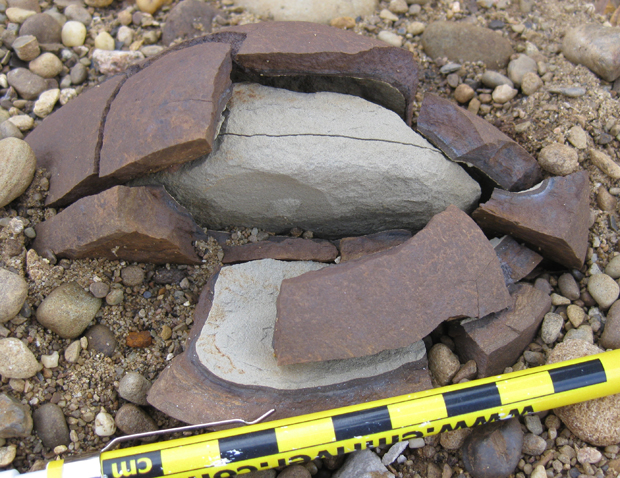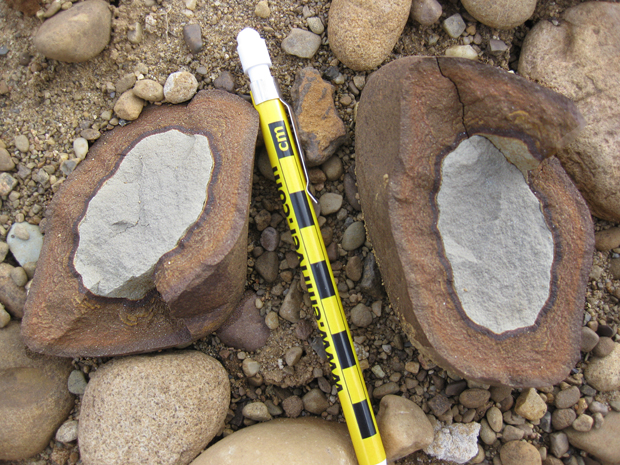Another group of interesting cobbles from the same sand and gravel pit that I described earlier in the week:

Here’s the same sample, gone all animated, for your perspectivizing pleasure:

What we’re seeing here is some fine-grained gray colored rock (siltstone, I guess?) that’s developed a pronounced weathering rind marked by a large amount of rust. This rusty rind is tougher than the original, unaltered rock, and it peels off, like an orange peel. There were a lot of these in that gravel pit for some reason…
Here’s one that split down the middle, like an apple halved by a meat cleaver:

My favorite one — as a certifiable “purty rock,” I brought it home as a little gift for Lily:

There’s a little bit of Liesegang banding going on in the lower left “corner” of this one — this suggests groundwater soaking in to the cobble and leaving a hematite deposit at the “soaking front.”

Enjoying your trip to the quarry. Learned something today, I always though that the old “kidney stone” rocks were built up over time by iron enriched water.
Yeah, I think that’s exactly what’s going on — either iron enriched water encountering oxygen as it soaks into a rock, or oxygen-enriched water encountering oxygen as it soaks into a iron-rich rock. Either way, the rusting reaction takes place where the two meet…
Dear Callan,
Please send me your email address.
I want to send you a photo related to above topic so that I can conform that it is or not.
Haroon
http://www.nvcc.edu/home/cbentley/contact.htm